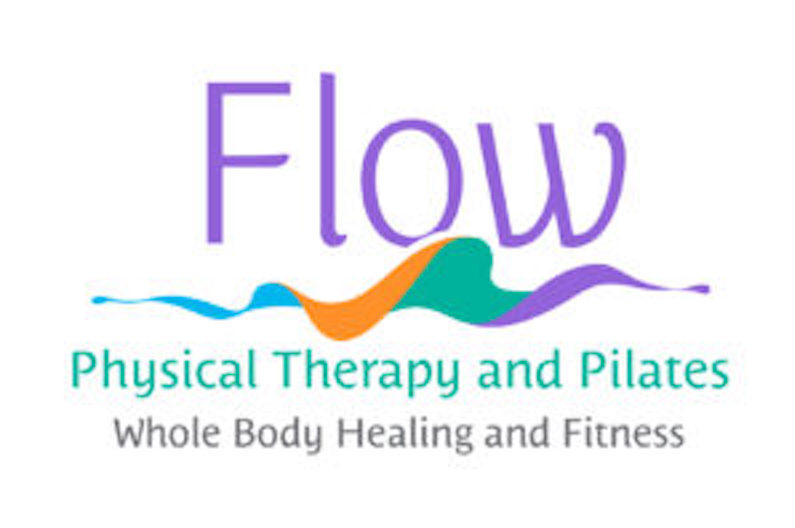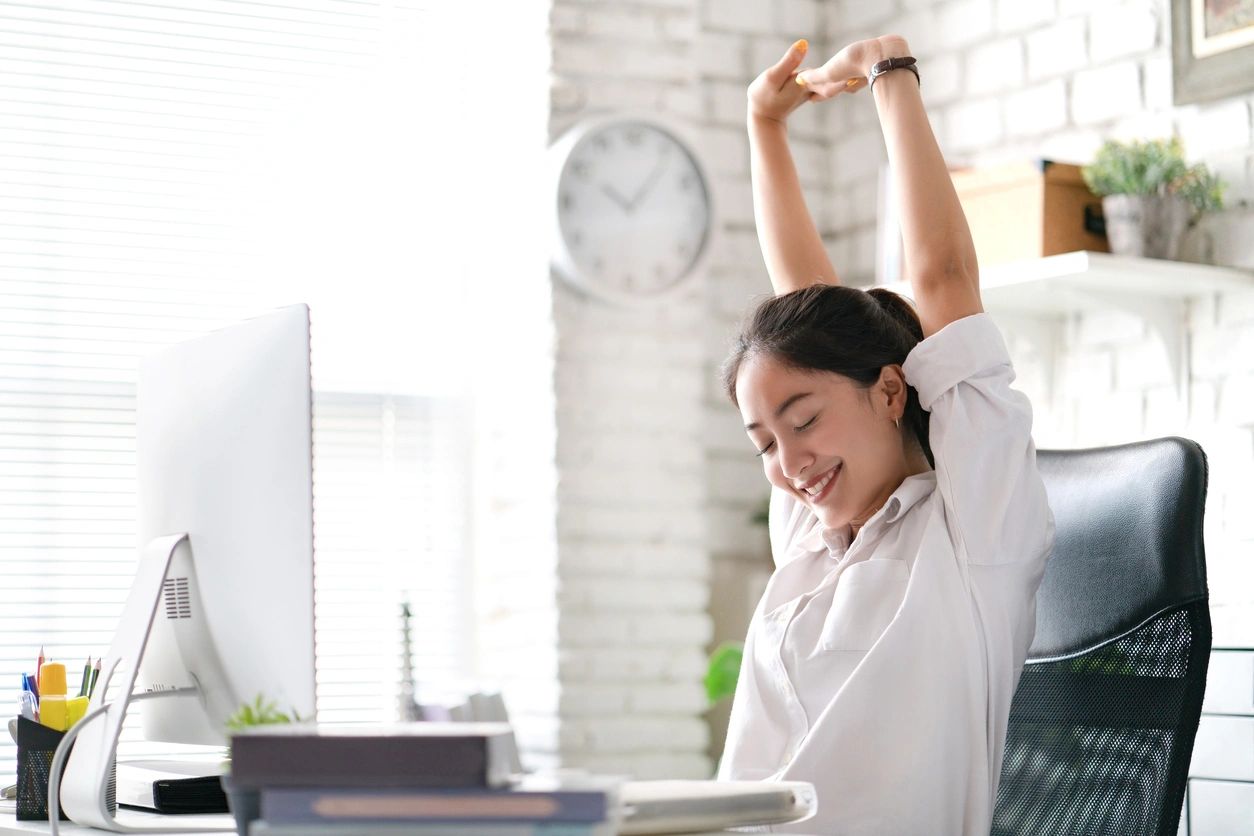Raise your hand if you are reading this and know that your posture is amazing! Raise your hand if you know the best exercises to promote good posture! Did you raise your hand? No? Generally speaking, most of us don’t have great posture. You might ask, why is that?
One reason is that we are a society of sitters. We sit to drive to work or school. We sit to ride public transit. We sit at our computers at work. We sit while binge watching the latest season released on our streaming service. We sit while playing video games. We sit while breastfeeding. We sit, sit, sit, sit, sit.
Unfortunately, our spines aren’t really evolved to sit for long periods. We developed to walk upright. So, what happens when we sit for a long time?
Posture Changes – The Bad
The biggest change caused by sitting is tight hip flexors (the muscles along the front of our hips). Tight hip flexors cause our pelvis to tip forward, thereby leaning our whole trunk forward in standing. Yet, our bodies are programmed to point our eyes ahead at the horizon. To compensate for the forward tilt of the pelvis, our low back overextends (bends backwards) or our neck juts our chin forward to lift our head upward.
Another result of prolonged sitting can be backwards rotation of the pelvis. This rotation causes our low back, or lumbar spine, to flex forward. The middle to upper back, or thoracic spine, follow along like pieces of a bike chain, creating a slumped posture in which our whole trunk is “C” shaped. Once again, our neck, or cervical spine, bends backwards and our chin juts out to keep our eyes looking forward.
The muscles and ligaments of the entire trunk are put on stretch. Consequently, this prolonged stretch wears out the structures that protect our spine. (This is “The Ugly.”)
The shoulders go through changes as well when posture is poor. For example, the upper back position influences the position of the shoulder socket. As such, when the upper back slumps, the shoulder socket tilts forward and inward. The arms follow the socket as gravity pulls the shoulders forward and inward. This shoulder position tightens the muscles along the front of the chest and can even limit how well our ribs move for breathing.
These posture changes occur together. With all these changes occurring, it might seem hard to imagine being able to improve posture once it has gone bad. Yet, because these body parts influence each other, making a positive change in posture to one body part can affect multiple areas.
Posture Exercises – The Good
So you have less than ideal posture, maybe even poor posture. As I mentioned above, you can work on that. Most of the exercises are simple.
The String
My favorite go-to “exercise” for posture is something I call The String. It is more of a cue or visualization than an exercise, but causes muscles to kick in nonetheless. The String is as follows:
Imagine you have a string at the very top, or crown, of your head. Now imagine this string pulling upward, lifting you taller and longer.
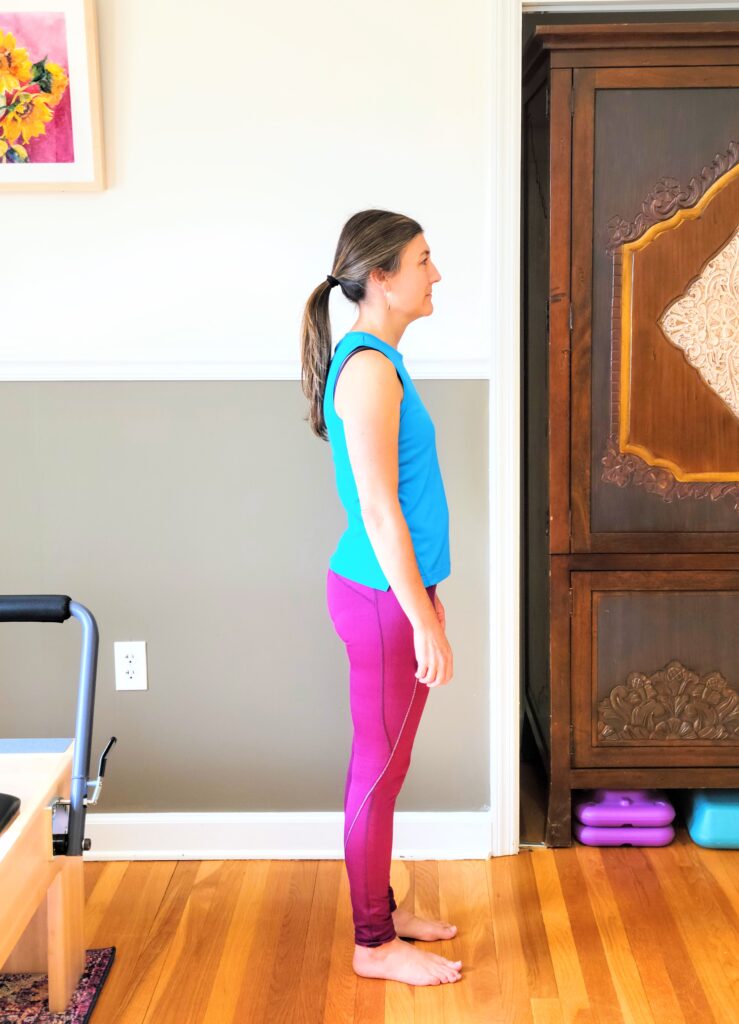
Relaxed posture 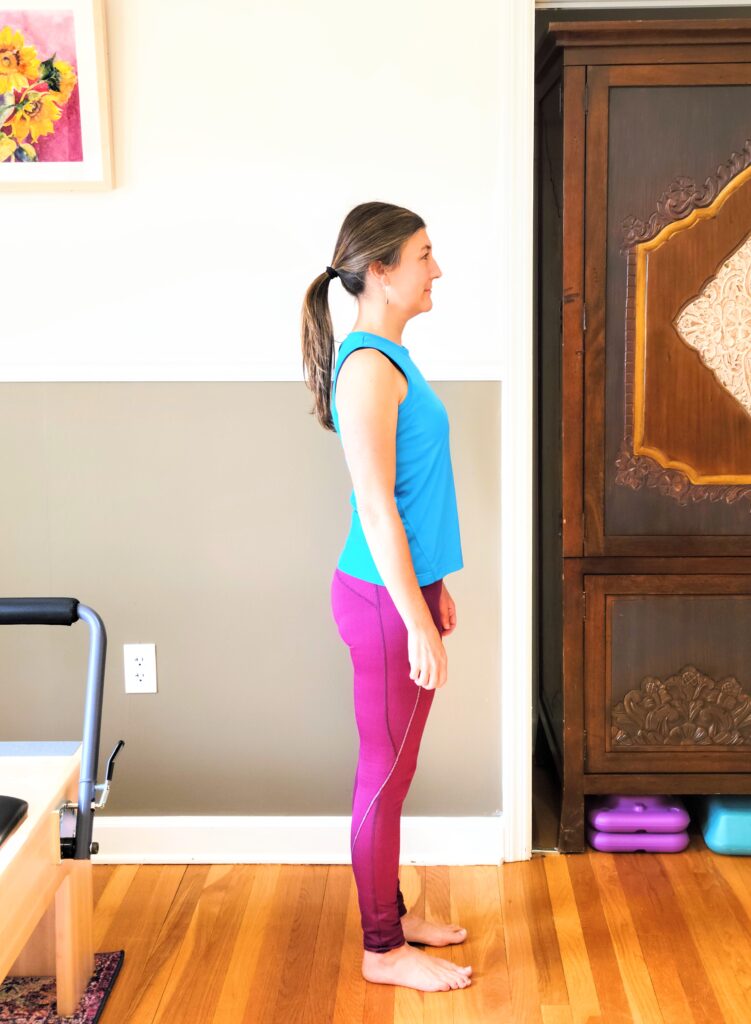
Posture while doing The String imagery exercise
The above imagery automatically brings the head back over the shoulders and raises the chest bone. It also helps us to lightly contract our core muscles, including our pelvic floor. This alignment exercise is best when done throughout the day. It can be done sitting, standing, or lying down. There is no set number of times to do this.
Wings Out
Working down the body brings us to the next exercise. Wings Out is similar to shoulder blade squeezes or the shoulder presses exercise by osteoporosis PT guru Sara Meeks. It is done as follows:
With arms relaxed at sides, rotate arms so that palms face forward. Next, imagine that your collar bones (AKA clavicles) are wings that you are spreading out.
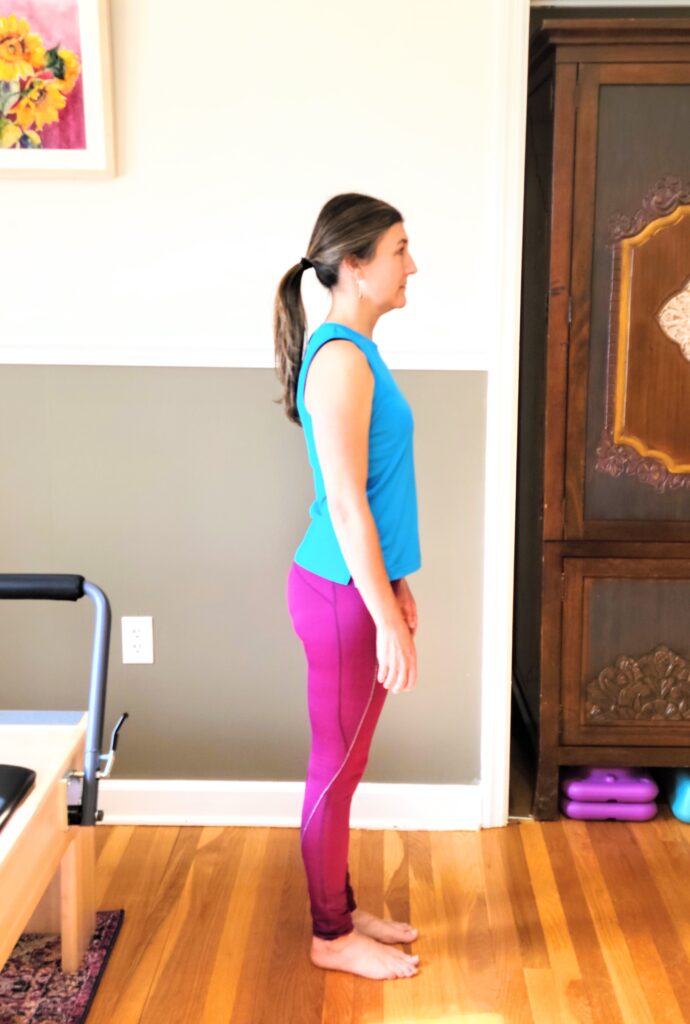
Side view of standing with relaxed posture 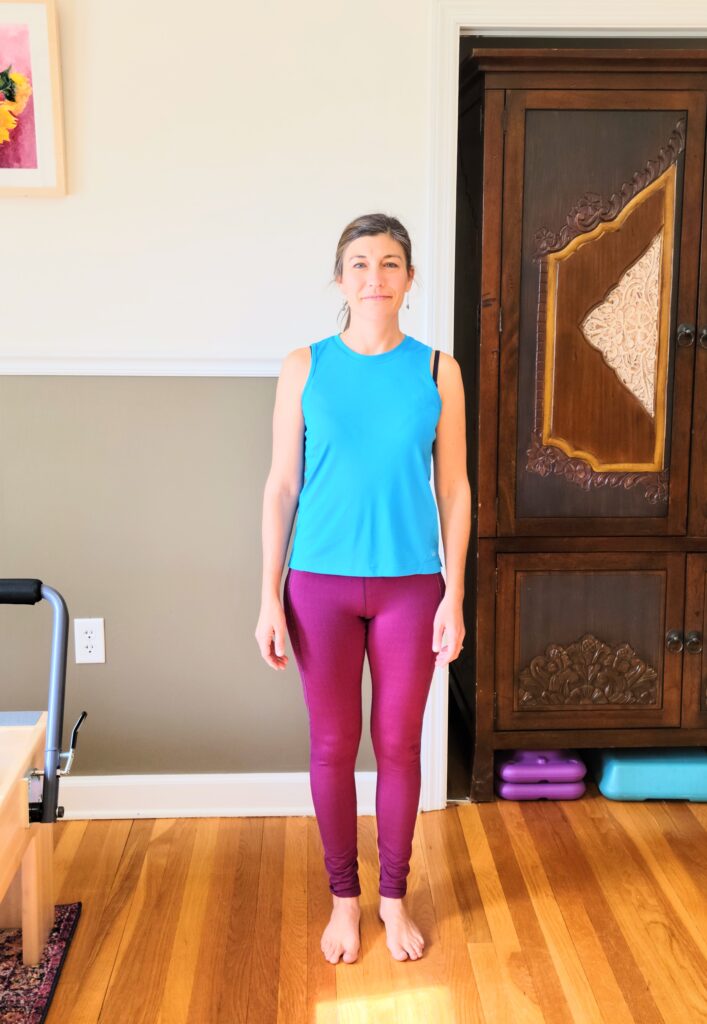
Front view of standing in relaxed posture
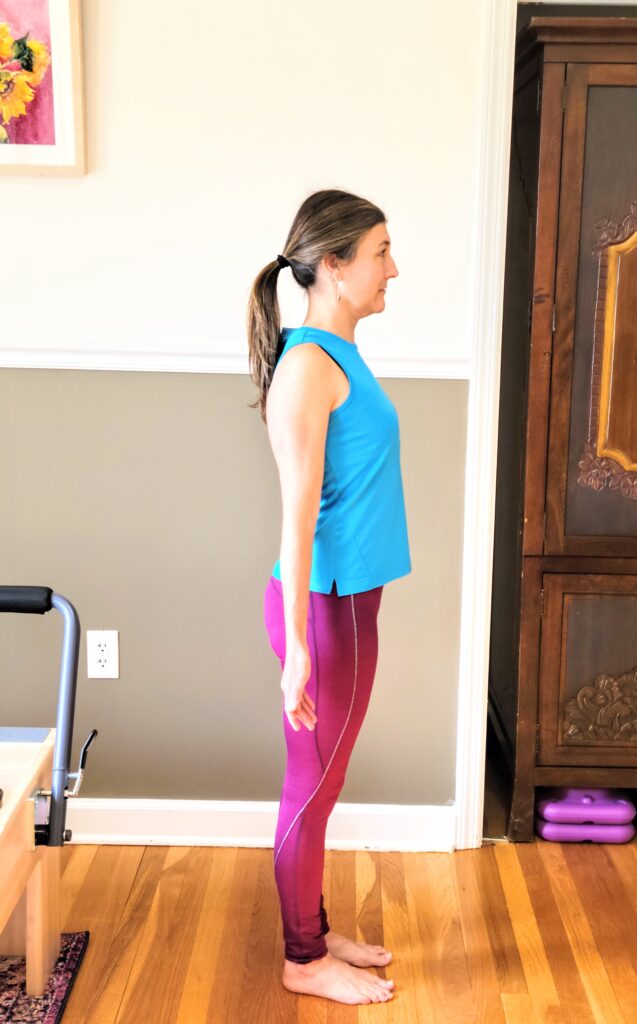
Side view of Wings Out exercise 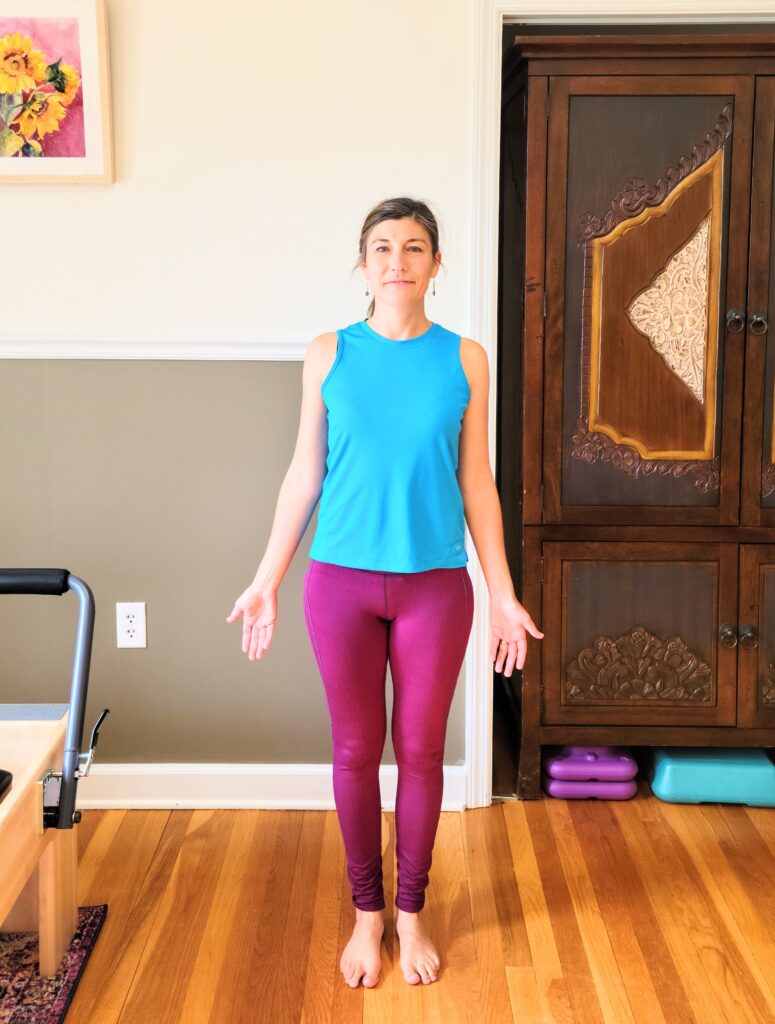
Front view of Wings Out exercise
This exercise contracts the muscles between the shoulder blades to position the shoulder and arms more in line with the torso. It also lengthens, or actively stretches, the pectoral muscles (the muscles along the front of the shoulders and chest). As with The String, do this exercise in sitting, standing, or lying down. There is no set number of times to do this.
Seated Hip Flexor Stretch
This last exercise is a stretch for the muscles along the front of the hip, known as the hip flexors. As previously discussed, tight hip flexors impact our entire spine, including our neck. The stretch is as follows:
Sit sideways at the front corner of a chair, couch, or stool. Keep the inside leg (leg closest to the seat) bent with the foot flat on the floor. Reach the outside leg (leg furthest away from the seat) back. Keep the trunk straight up and tuck your tailbone under slightly. You can straighten the knee of the outside leg to increase the stretch. You should feel a light to moderate stretch at the front of the hip. There should be no back pain.
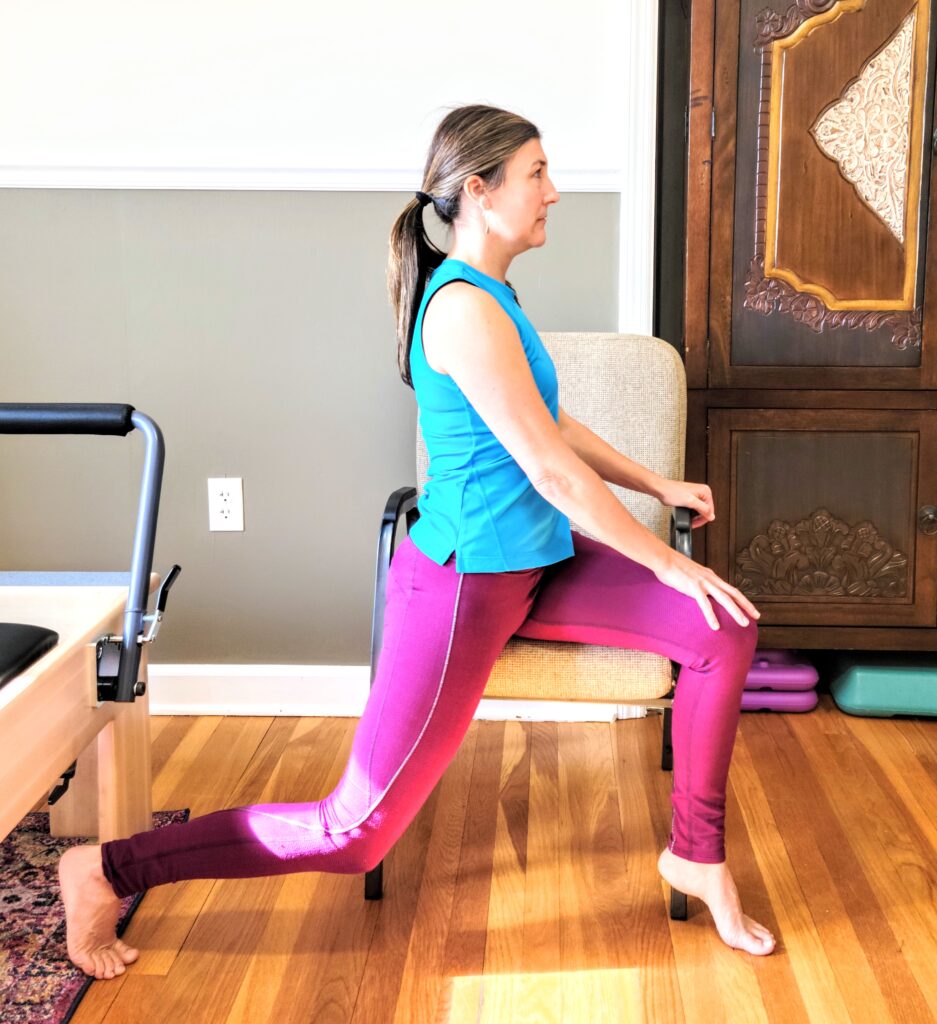
Seated hip flexor stretch with knee bent 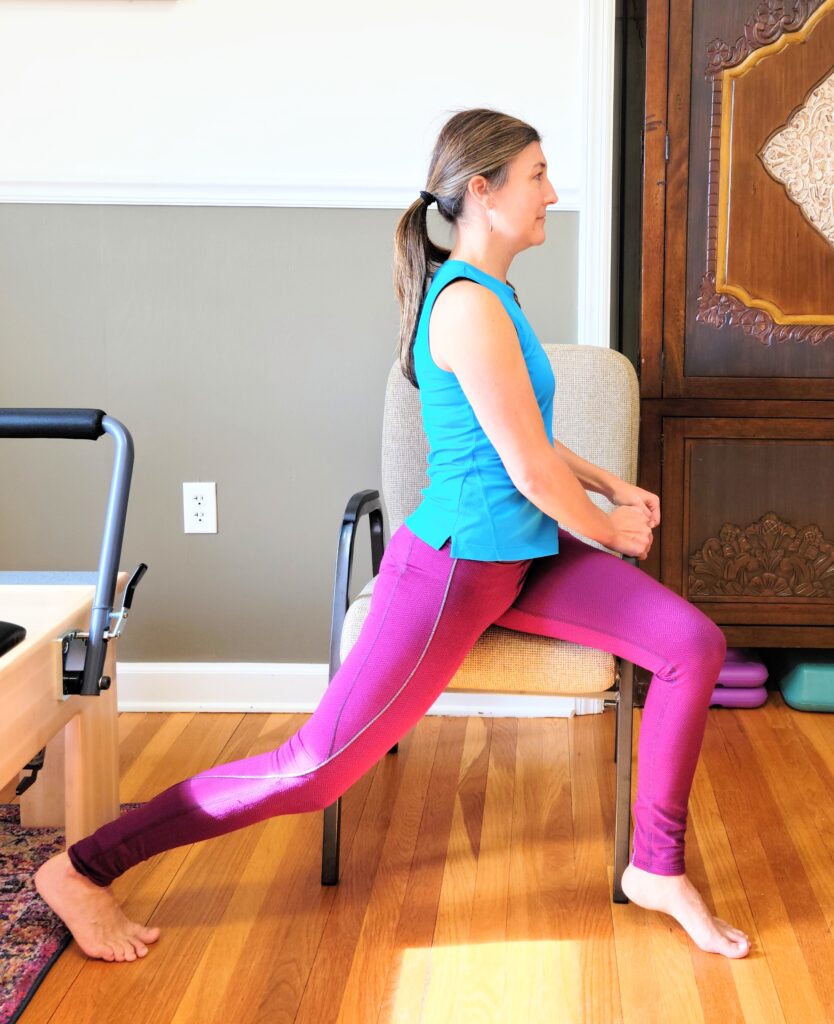
Seated hip flexor stretch with knee straight
The above stretch increases the amount our leg can extend back, which is needed for proper walking and running. Since sitting is a position most people find themselves in a lot, a stretch that can be done in sitting makes it easier to remember to do. Hold this stretch for 60 seconds with full, slow breaths. As with all posture exercises, do it frequently throughout the day.
Posture Exercises Review
“Wait! That’s it?!” you say. You glorious intelligent person, of course that’s not all! There are a whole slew of other posture exercises. There are websites, blogs, books and seminars focused just on posture.
While you can geek out on posture and dive down its rabbit hole, my theory is to keep is short and simple. The biggest excuse I hear as to why people don’t do home exercises is that they don’t have time. The above exercises are completed within 5 minutes or less. In short, focus on posture exercises that give you the most for the time you put in.
Another reason to keep it short is that posture exercises are most effective when done frequently throughout the day. I advise clients to set an alarm to work on posture for every 1-2 hours at work, even if that means just standing up or moving away from the computer for a minute. It also takes lots of repetition to train the body to adopt a new position or movement pattern. So…practice, practice, practice.
You don’t need to be an athlete to achieve good posture. You just need to be persistent.

